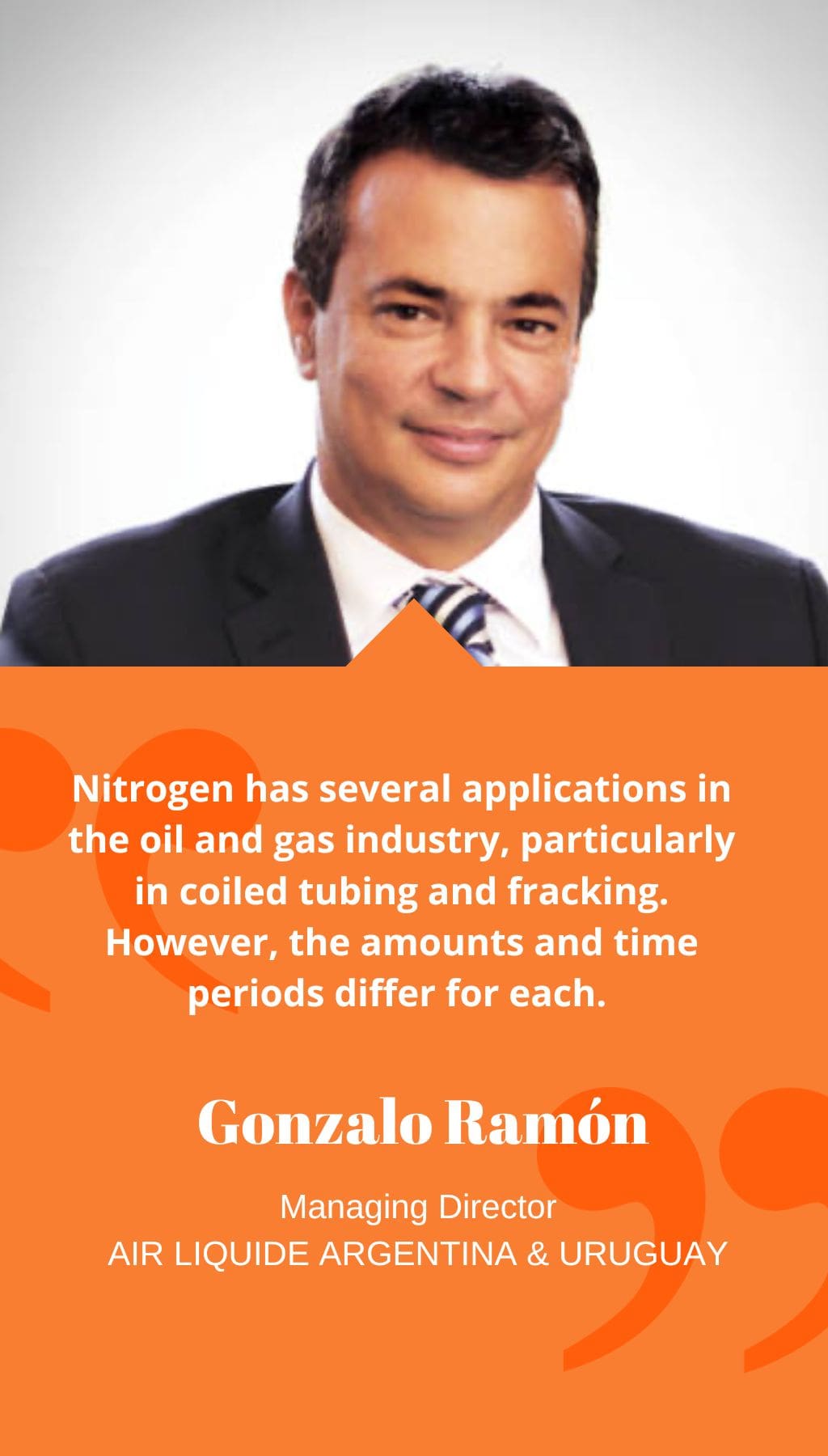
- Argentina | 6 July 2017

Can you share some background information about Air Liquide in Argentina?
Absolutely. Air Liquide has a rich history in Argentina dating back to 1914 with the founding of La Oxígena. The company was acquired by Air Liquide in 1938, making it the oldest industrial gas supplier in Argentina with over a hundred years of experience. Today, Air Liquide is the leading industrial gas supplier in the country, with a presence throughout the entire country, including ten air-gas plants, four CO2 plants, three hydrogen plants, and branches in locations such as Jujuy and southern Argentina. We supply clients from the northernmost part of Argentina to Tierra del Fuego, which is one of our greatest strengths. With 550 employees, Air Liquide Argentina is second only to Brazil at the regional level. Our services span across various industries, including oil and gas, steel, automotive, food, and healthcare.
Can you elaborate on the development of Air Liquide’s services to the oil and gas industry in Argentina?
Over the last three and a half years, Air Liquide has doubled the volume of gases, mainly nitrogen, supplied to oil and gas clients. Our presence in Neuquén and throughout Patagonia through a branch has been for over 40 years. We also have an air supply unit at the company’s plant in Plaza Huincul, near the heart of oil and gas activity in Argentina. Our clients in upstream and downstream include operators and oilfield service companies such as Shell, Axion, Total, Baker Hughes, CalFrac, Weatherford, Halliburton, Schlumberger, Superior Energy, YPF, among others. Although we may not be an oil and gas company, the development of Argentina’s hydrocarbon industry presents several opportunities for us. Our revenue from the oil and gas industry has been growing in recent years, and we have a business unit dedicated to the oil and gas industry, which will remain one of our main growth drivers in the coming years.
Can you provide examples of the applications of nitrogen in the oil and gas industry?
Nitrogen has several applications in the oil and gas industry, particularly in coiled tubing and fracking. However, the amounts and time periods differ for each. For instance, coiled tubing requires approximately 10 tons of nitrogen, which is about one truck that will last for about a day and a half. On the other hand, fracking requires almost 80 tons of nitrogen, which translates to up to five trucks in just a few hours. The coordination required to deliver tons and trucks of nitrogen makes Air Liquide more than a supplier but also a service company. We have invested not only in product development but also in mastering the logistics associated with making critical deliveries. Although unconventional activities like fracking have only begun in Argentina in the last few years, Air Liquide has been providing related services in other countries for years. Our team in Argentina works closely with our teams in Canada and the United States to explore new opportunities and ways of serving the needs of our oil and gas clients.
What investments is Air Liquide planning to make?
Air Liquide has grown tremendously in recent years, even during the crisis in 2009, when we invested in a large hydrogen plant with Exxon, a client at the time. Currently, we plan to invest approximately $85 million to increase our production capacity and replace imports, such as argon, with locally produced gases. We prioritize local products when substituting is possible, but the main issue is the availability of enough products in the country to support our needs. This investment will support the growth we have experienced in recent years.














